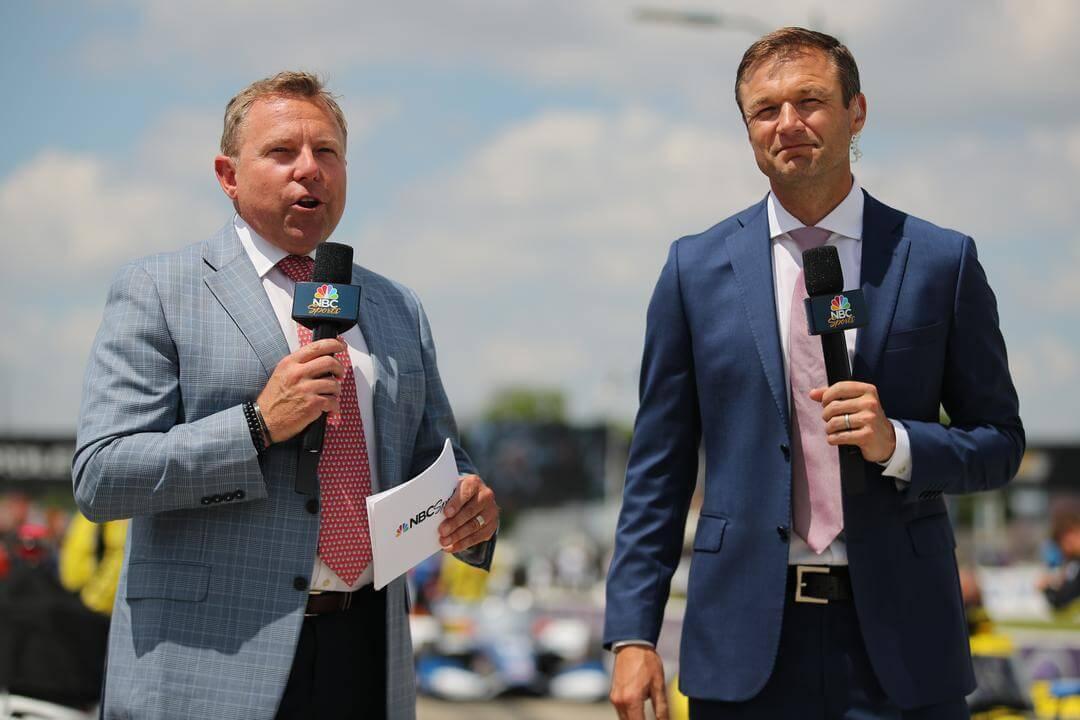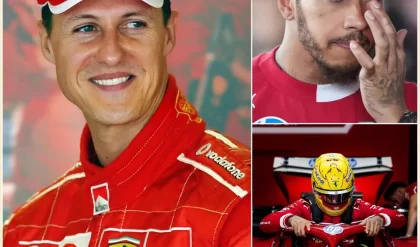The NASCAR Cup Series took a thrilling turn at the Iowa Corn 350, not just for the on-track action but for the shift in the broadcast booth. As NBC kicked off its coverage for the 2025 season, all eyes were on veteran announcer Leigh Diffey and his team. The race marked a new chapter for NASCAR fans, with NBC set to carry the remainder of the season. However, the debut wasn’t without its share of chatter—both praise and criticism—from fans and insiders alike. Veteran NASCAR insider Jeff Gluck, co-host of The Teardown podcast, offered a candid take on the broadcast, highlighting what worked, what didn’t, and why Diffey’s voice is a game-changer for the sport.

The Iowa Corn 350, held at Iowa Speedway, delivered a race brimming with drama. From fierce battles for the lead to nail-biting fuel strategies, the event kept viewers on edge. William Byron clinched the victory, outlasting a hard-charging Brad Keselowski in a race where track position and fuel management were everything. But as fans tuned in, it wasn’t just the racing that sparked conversation—it was NBC’s first broadcast of the season, with Diffey at the helm. For many, his energetic delivery and distinctive Australian accent brought a fresh vibe to the telecast. Yet, not everyone was sold, and Gluck didn’t shy away from addressing the mixed reactions.
Diffey, a seasoned broadcaster known for his work across motorsports, including IndyCar and Formula 1, has a knack for injecting excitement into every call. Gluck was quick to defend him against detractors, particularly those hung up on his accent. “I’ll tell you what I do like is Leigh Diffey,” Gluck said on The Teardown. “And people who are in my mentions and replies, ‘Oh, Leigh Diffey, I can’t stand the accent.’ Good lord. He’s one of the best sports announcers period. Makes it exciting. And people are going to complain because he has an accent? Wow. OK. Sure.” Gluck’s frustration was palpable, and his endorsement of Diffey underscored a broader point: the announcer’s ability to elevate the viewing experience is undeniable. His play-by-play, marked by sharp enthusiasm and a knack for capturing the moment, turned an already thrilling race into must-watch television.
Still, the broadcast wasn’t flawless. One point of contention was NBC’s timing on commercial breaks, a sore spot for Gluck and many fans. During a heated battle between Byron and Keselowski for the lead, the network cut to a commercial, leaving viewers frustrated. Gluck didn’t mince words, pointing out how the decision disrupted the flow of the race. For a sport where momentum is everything—both on the track and in the broadcast booth—such missteps can sour the experience. Yet, Gluck was equally quick to praise NBC’s strengths, particularly their use of graphics to enhance the storytelling.

Fuel strategy played a massive role in the Iowa Corn 350, with drivers pushing their cars to the limit as laps dwindled. NBC leaned into this narrative, using a fuel graphic to keep viewers informed about which drivers were at risk of running dry. Gluck appreciated the effort, even if it wasn’t as sophisticated as the competition’s. “I was glad that they had some sort of a fuel graphic, even though they don’t have the cool burn bar that Prime had,” he noted. “That’s proprietary technology for Prime. They did have the fuel graphic.” However, he pointed out a flaw: the graphic wasn’t always accurate. Byron, for instance, appeared destined to run out of fuel based on the display, yet he stretched his tank to the finish line for the win. Gluck explained the limitation, saying, “That is very estimated fuel remaining. Because you don’t know how much fuel they put in the car. They can’t measure that. They have no way to measure how much fuel is in or how much fuel is actually left. They’re just judging off how many laps have been run, I believe.” Despite the imprecision, the graphic added a layer of suspense, keeping fans glued to their screens as they wondered who would make it to the checkered flag.
Beyond fuel graphics, NBC’s broadcast shone in other areas. Gluck highlighted a particularly insightful moment when the network displayed a “top defenders” graphic during a tense moment at the end of Stage 1. As Byron fended off Keselowski’s aggressive moves, NBC flashed data showing Byron as the third-best defender in the season. “They immediately popped up a graphic that said ‘top defenders,’ the NASCAR insights of the season,” Gluck said. “You had Byron up there No. 3, you’re like OK, see, Byron’s a good defender right now.” This quick use of analytics gave viewers context for the on-track battle, reinforcing why Byron was able to hold his ground. It was a small but effective touch, proving NBC’s ability to weave data into the narrative without overwhelming the audience.
The Iowa Corn 350 itself was a masterclass in short-track racing, with Iowa Speedway’s 0.875-mile oval delivering the kind of close-quarters action NASCAR fans crave. The race felt reminiscent of Dover, another track where position is king. Gluck noted this similarity, saying, “Playing defense with this car on the short tracks, it was very Dover-esque in a way. Track position meant a whole lot.” NBC’s coverage captured this intensity, balancing raw action with strategic insights. For Gluck, the broadcast struck a solid balance overall. “I thought there was some good elements,” he said, giving NBC credit for delivering a well-rounded show despite the hiccups.
As NBC takes the reins for the rest of the 2025 season, the Iowa broadcast sets the tone for what fans can expect. With races like Watkins Glen on the horizon—airing at 2 p.m. ET on USA—the network has a chance to fine-tune its approach. Avoiding poorly timed commercial breaks will be key, as will refining tools like the fuel graphic to better reflect the on-track reality. Diffey, meanwhile, remains a polarizing yet undeniably talented figure in the booth. His ability to make every moment feel electric is a boon for NASCAR, a sport that thrives on high stakes and higher speeds. Gluck’s defense of Diffey reflects a broader sentiment among insiders: the Australian’s voice is a breath of fresh air, even if it takes some getting used to.
For fans, the Iowa Corn 350 was a reminder of why they love NASCAR—unpredictable finishes, strategic depth, and drivers pushing the limits. NBC’s coverage, while not perfect, brought that excitement to life. As the season rolls on, the network has an opportunity to build on this foundation, delivering broadcasts that match the intensity of the racing itself. Will they iron out the kinks and win over the skeptics? Only time will tell, but with Diffey leading the charge and insiders like Gluck offering their unfiltered takes, the conversation around NASCAR’s broadcasts is just as lively as the races themselves. For now, fans can look forward to more heart-pounding action, with NBC’s lens capturing every moment—and maybe a few more surprises along the way.





